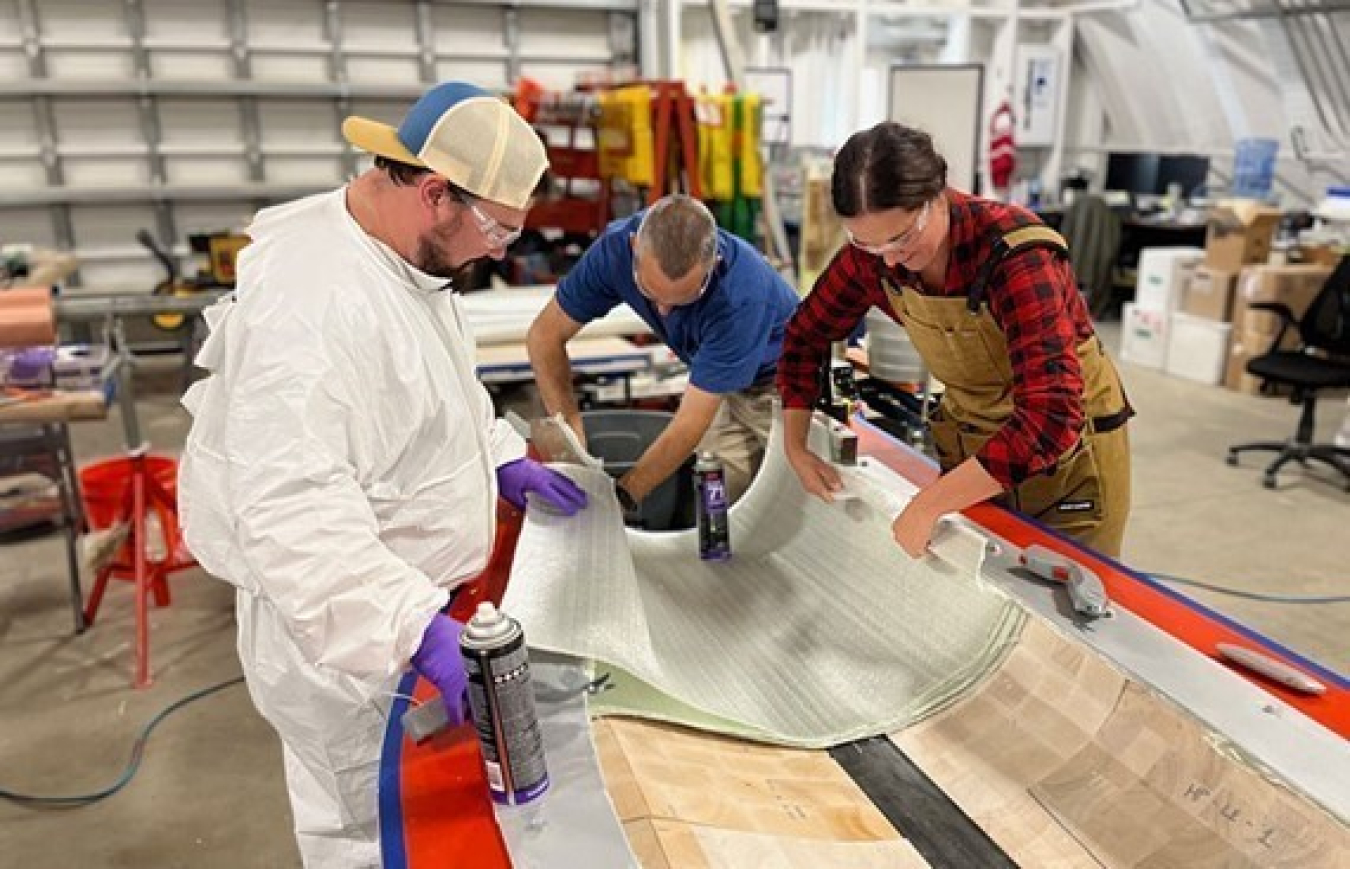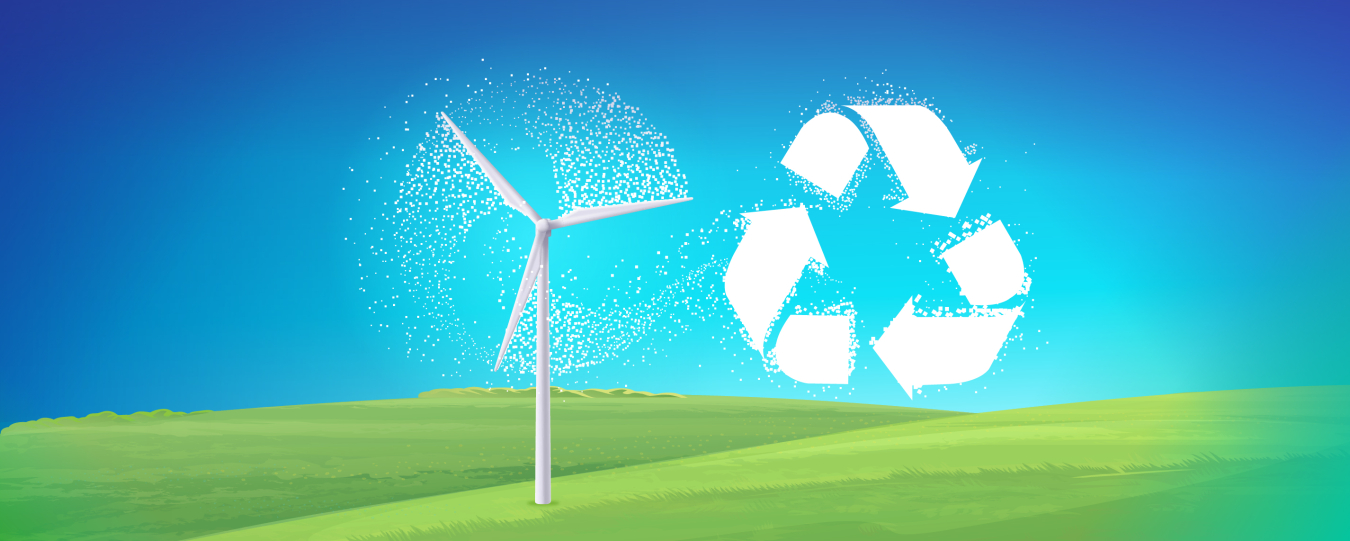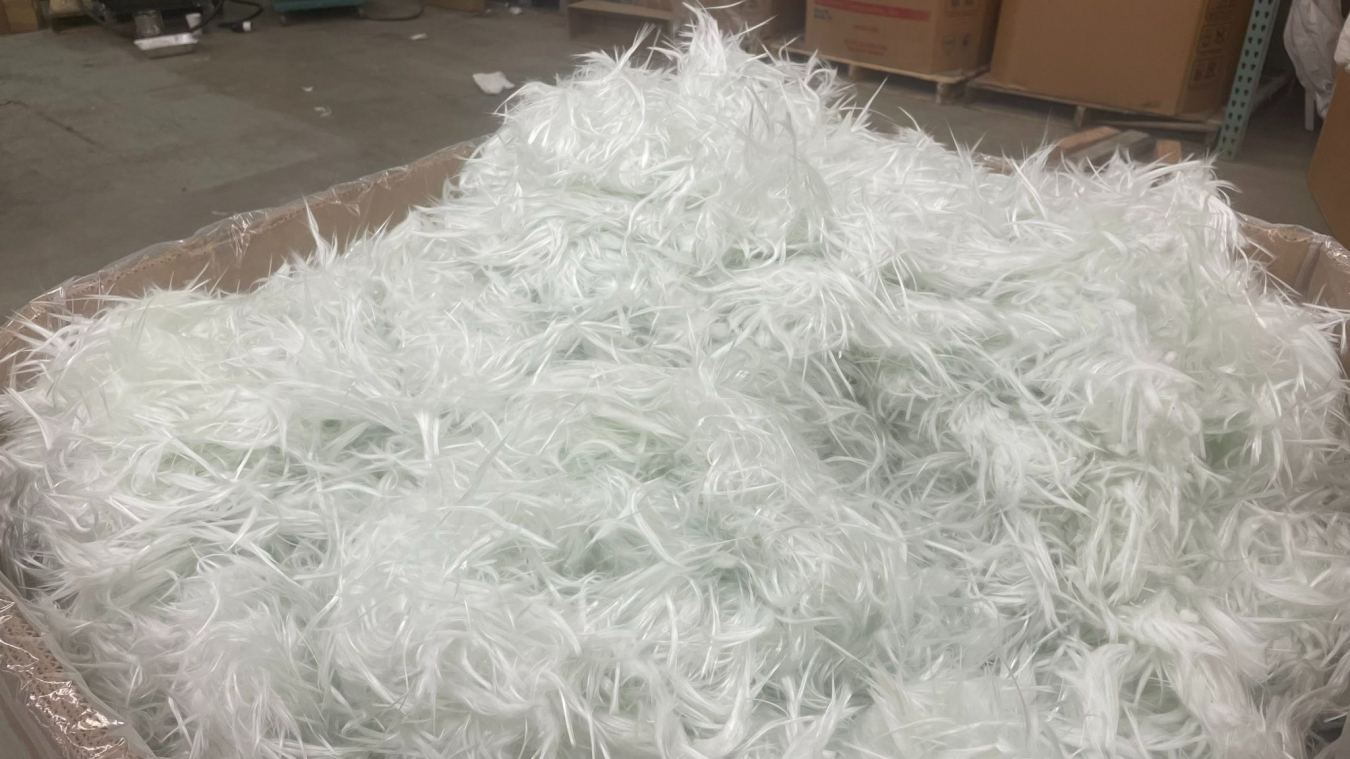Wind energy is one of the fastest-growing sources of electricity generation and is key to meeting our nation’s clean energy goals. The U.S. Department of Energy’s (DOE) Wind Energy Technologies Office (WETO) is working with researchers across industry, academia, and national laboratories to create a circular economy for wind energy.
A circular economy keeps materials, products, and services in circulation for as long as possible. This includes engineering technology from the start to require fewer materials, resources, and energy, while lasting longer and having components that can easily be broken down for use in future applications.
Extending the life cycle, reducing waste, and enhancing the recycling of wind turbine materials are important strategies to promote sustainability and reduce the environmental impact of wind energy systems. These approaches help minimize waste, conserve resources, and reduce greenhouse gas emissions associated with the production and disposal of wind turbine components.
Reducing Waste
As wind energy grows as a central component of a sustainable and prosperous economy, novel materials and manufacturing strategies are needed to ensure that more wind energy doesn’t mean more waste.
Leveraging higher-performing materials, using less energy-intensive materials, or eliminating the need for a component by changing the way the system works are all ways to reduce waste.
WETO is working to reduce the quantity of materials needed for high-performing wind turbines by:
- Working with DOE’s National Renewable Energy Laboratory (NREL) and Oak Ridge National Laboratory (ORNL) to develop novel techniques for wind turbine generator design and manufacturing to reduce the amount of material needed to achieve the same level of performance.
- Supporting the development of innovative materials for wind energy applications, such as the novel carbon fiber being developed at ORNL and Sandia National Laboratories (Sandia) which could make wind turbine blades lighter and more durable.
Extending the Life Cycle
Building wind turbines requires large quantities of materials and components, and these components will eventually reach the end of their design lifetime. Activities to extend the lifespan of wind turbines can include re-using discarded components for another purpose or inspecting and maintaining the components to increase their reliability and prolong function.
Wind turbine components like blades can fail and require replacement earlier than expected, indicating a need for manufacturing methods and materials that optimize longer life cycles.
Advanced drone and robotic maintenance, repair strategies for older blades, and diagnostic and inspection techniques that support certifying wind turbines to operate for an extended lifetime, are all ways to reduce demand for new blades.
With WETO funding, Sandia is developing advanced blade inspection techniques and improving repair capabilities as part of its Blade Reliability Initiative. WETO is also funding efforts at NREL and Argonne National Laboratory to improve the reliability and maintainability of wind turbine drivetrains through the Drivetrain Reliability Collaborative.
Enhancing Recycling
Recycling wind turbine materials involves the recovery of valuable resources from decommissioned turbines, saving energy that would otherwise be required for their production. It also helps divert waste from landfills, preventing pollution and conserving natural resources.
About 85%–90% of the mass of a wind turbine is made of materials that can already be commercially recycled. The bulk of the unrecycled materials is composed of fiber-reinforced composites (carbon fiber and fiberglass). These materials can be found in various forms in wind turbine blades, nacelle covers, and the cover for the hub that connects the blades to the wind turbine.
The wind energy industry also depends on critical minerals, such as rare earth elements (including the neodymium and dysprosium magnets used in generators), which do not currently have domestic commercial-scale recycling options.
WETO is working to close the gap on the remaining 10%–15% of unrecyclable material in a wind turbine by supporting new recycling technologies and innovative materials and manufacturing processes.
- In July 2023, WETO launched the Wind Turbine Materials Recycling Prize, a $5.1 million competition funded by the Bipartisan Infrastructure Law that will help the United States develop a cost-effective, sustainable recycling industry for two types of materials used in wind turbines: fiber-reinforced composites and rare earth elements. In October 2024, DOE announced the six final winners of the Wind Turbine Materials Recycling Prize. Each team was awarded $500,000 in cash prizes, as well as $100,000 in vouchers to work with DOE national laboratories, for creating cost-effective recycling technologies that will increase the sustainability of U.S. wind energy systems.
- With WETO funding, researchers from the University of Tennessee and Carbon Rivers are developing a novel pyrolysis, or thermal decomposition, method of reclaiming fiberglass from retired wind turbine blades. The recovered fiberglass will be used for new blade construction, and to manufacture second-generation composites for the automotive, consumer products, marine, and aerospace industries.
- Working with multiple national laboratories, WETO is assessing the current state of materials recycling and recovery technologies for wind energy components. This effort will provide data to DOE that will help guide high-priority research and development needs in the U.S. wind industry, including information to support community engagement and outreach.
To learn more about the life cycle of a wind turbine and what happens to wind energy infrastructure when a project is decommissioned, visit WINDExchange.
Wind Turbine Sustainability News
-

- Wind
- Wind Energy
Report suggests investing in strategies and innovations to process the remaining 10%, improving sustainability and supporting a circular economy. -

- Wind Energy
- Circular Economy and Sustainable Manufacturing
- Clean Energy
- Renewable Energy
- Commercial Implementation
Six teams were selected for creating cost-effective recycling technologies that will increase the sustainability of U.S. wind energy systems.
-

- Wind Energy
- Circular Economy and Sustainable Manufacturing
- Clean Energy
- Critical Materials and Minerals
- Investing in America
This $5.1 million competition will help create a circular wind energy economy -

- Circular Economy and Sustainable Manufacturing
- Wind Energy
- Advanced Manufacturing Processes
- Commercial Implementation
- Clean Energy
Company Commercializes the Only Currently-Available Technology that can Recycle Fiberglass From Decommissioned Wind Turbine Blades

